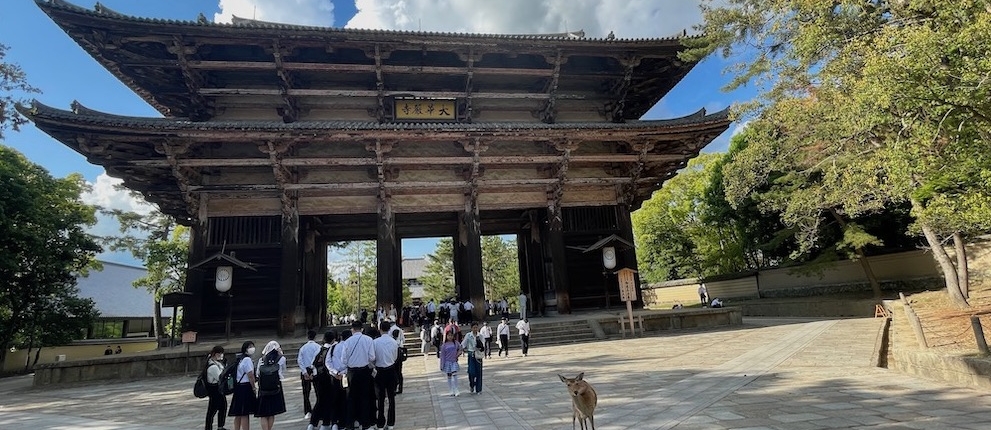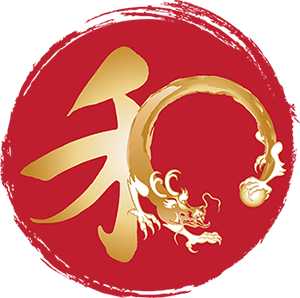READING TIME: 5 MINUTES.
Breaking an ancient tradition
In ancient times, according to Shinto traditions with the passing of each Emperor their palace was abandoned because it was seen as impure. The capital was then moved to a new location. In the year 708 AD the Empress Genmei broke with this wasteful tradition and with a decree established her capital in the city of Heijo, present days Nara. Nara will remain a capital of Japan until 784 AD after which the capital will be moved to Kyoto. So, even if Nara was not Japan’s first capital it was the country’s first permanent one.
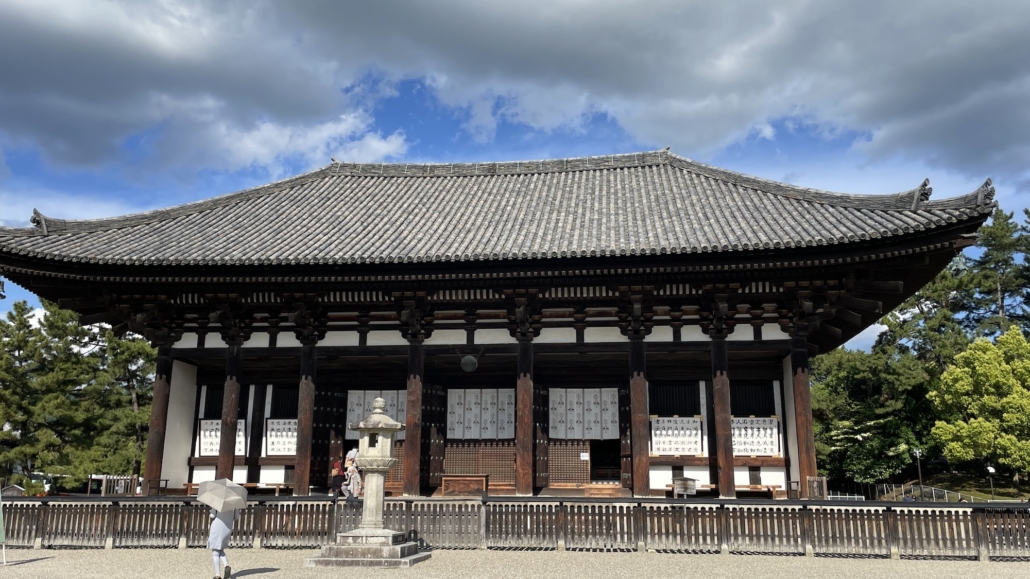
Kofukuji Temple – the oldest temple in Nara, was rebuilt several times but has miraculously retained its original design
The city was modeled after the Chinese Tang dynasty’s capital. It was laid out on a grid divided by four great roads with the ruler’s palace in the center of this grid. It was believed that the ruler had the power to bring heaven to earth. Through placing the palace in the middle of the city, the ruler not only dominated the capital but also brought heavenly energies to it. Not much of the original palace has remained but we can still see many of Nara’s ancient temples and shrines that collectively form the Historic Monument of Ancient Nara, a UNESCO World Heritage Site.
Oh, deer!
The first thing that grabs the attention when you enter Nara Park, where the historical sites are, is the deer. Nothing can prepare you for the sight of more than 1,000 of them freely roaming the grounds, completely unafraid of people. Believed to be messenger of the gods, the deer were considered sacred. Killing one of these sacred deer was a capital offense up until 1637, the last recorded date of a breach of that law. In present days they are designated as a Natural Monument and are protected as such.
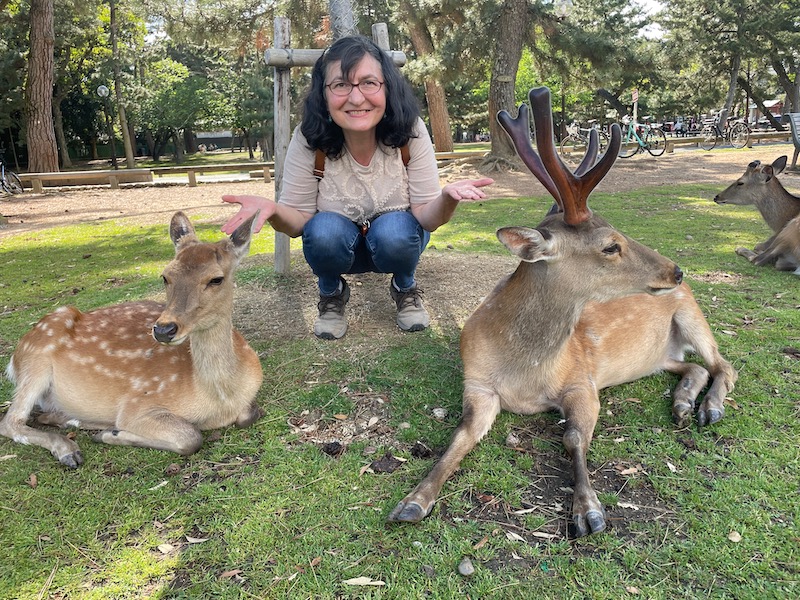
The first thing you see when entering Nara Park is the deer
The deer are said to be wild animals. They feed on grass and other plants that grow in the park, however their favorite treat are shika senbei, or deer crackers that are sold by many vendors around the park. The deep can be quite insistent demanding their treat so be careful to not get butted by one of those horns! Most of the time however they are sweet and a lot of fun, graciously posing for a photo with the many visitors. We visited Nara in mid May and were fortunate to also see the little fawns running beside their mothers – all in all it was a truly unique experience I haven’t had anywhere else.
The temples of Nara
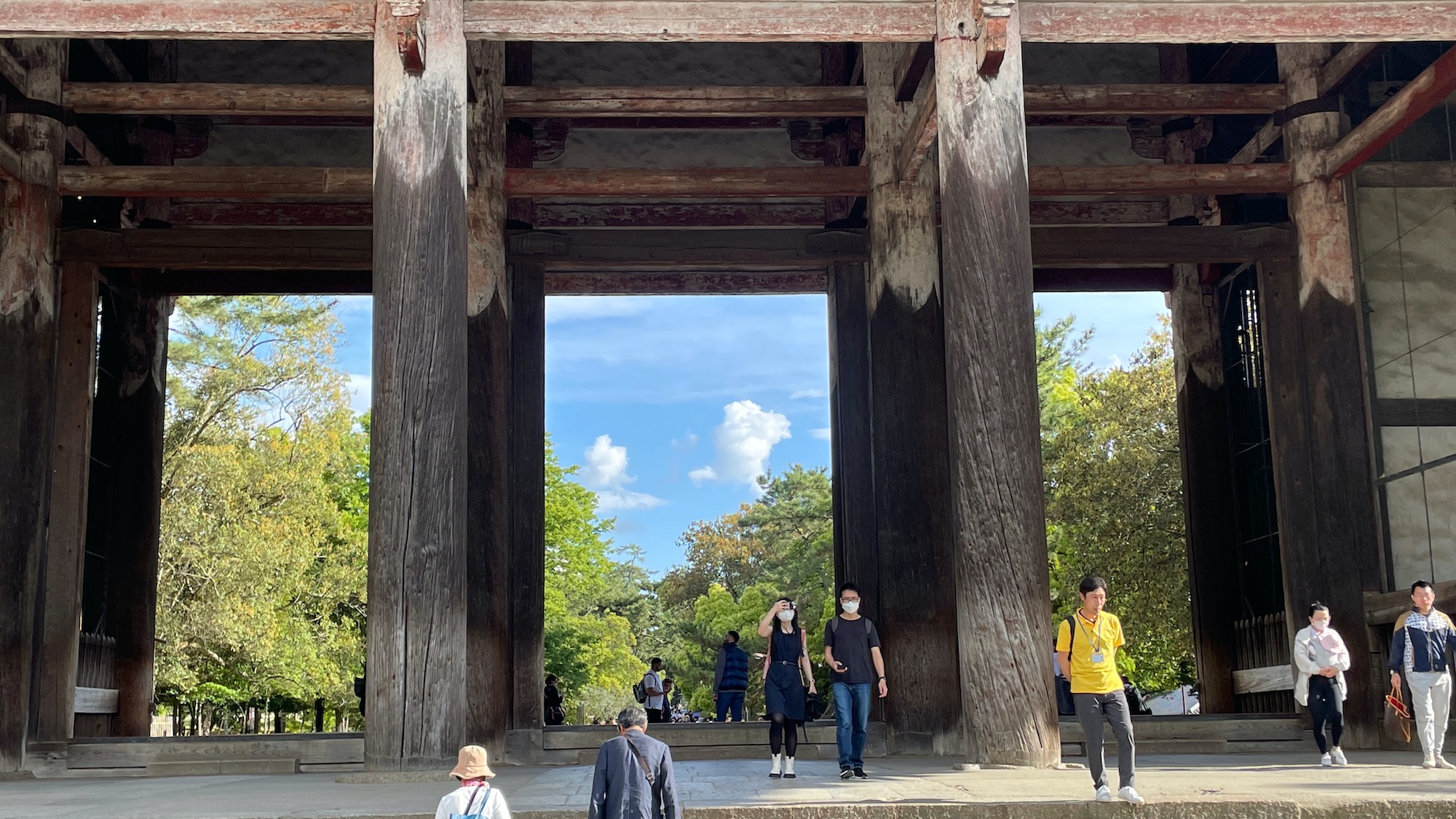
The gate of the Todaiji Temple is impressive with its giant wooden columns
Near the entrance of Nara Park is the Kofukuji Temple, the oldest in Nara. Originally built in the 7th century, it was destroyed and rebuilt several times through the millennia of its existence. Miraculously, the temple has retained its original design. I found the contrast between the dark varnished wood of the columns and the white walls beautiful in its simplicity. What impressed me the most however was Kofukuji’s 5-story pagoda. At 50 meters it is the second tallest pagoda in Japan, just 7 meters shorter than the pagoda at Kyoto’s Toji Temple. The timing of our visit was fortunate because in July this year the pagoda will be closed for restorations (the last time it was rebuilt was in 1426 so it is very old!) and won’t be open to the public until 2026. Below you can see a short video I took at Kofukuji that I hope will give you a better sense of how impressive both structures are.
On the opposite side of the Nara Park is the Todaiji temple – the biggest wooden building in the world. It is the home of the largest bronze statue of the Buddha in Japan – the 16 meters tall Daibutsu – the Big Buddha of Nara. Taking photos inside the building was prohibited so I can’t show you the statue however, on the photo below you will see the temple building. The tiny human shapes in front of its huge gates give a good idea of the sheer size of Todaiji.
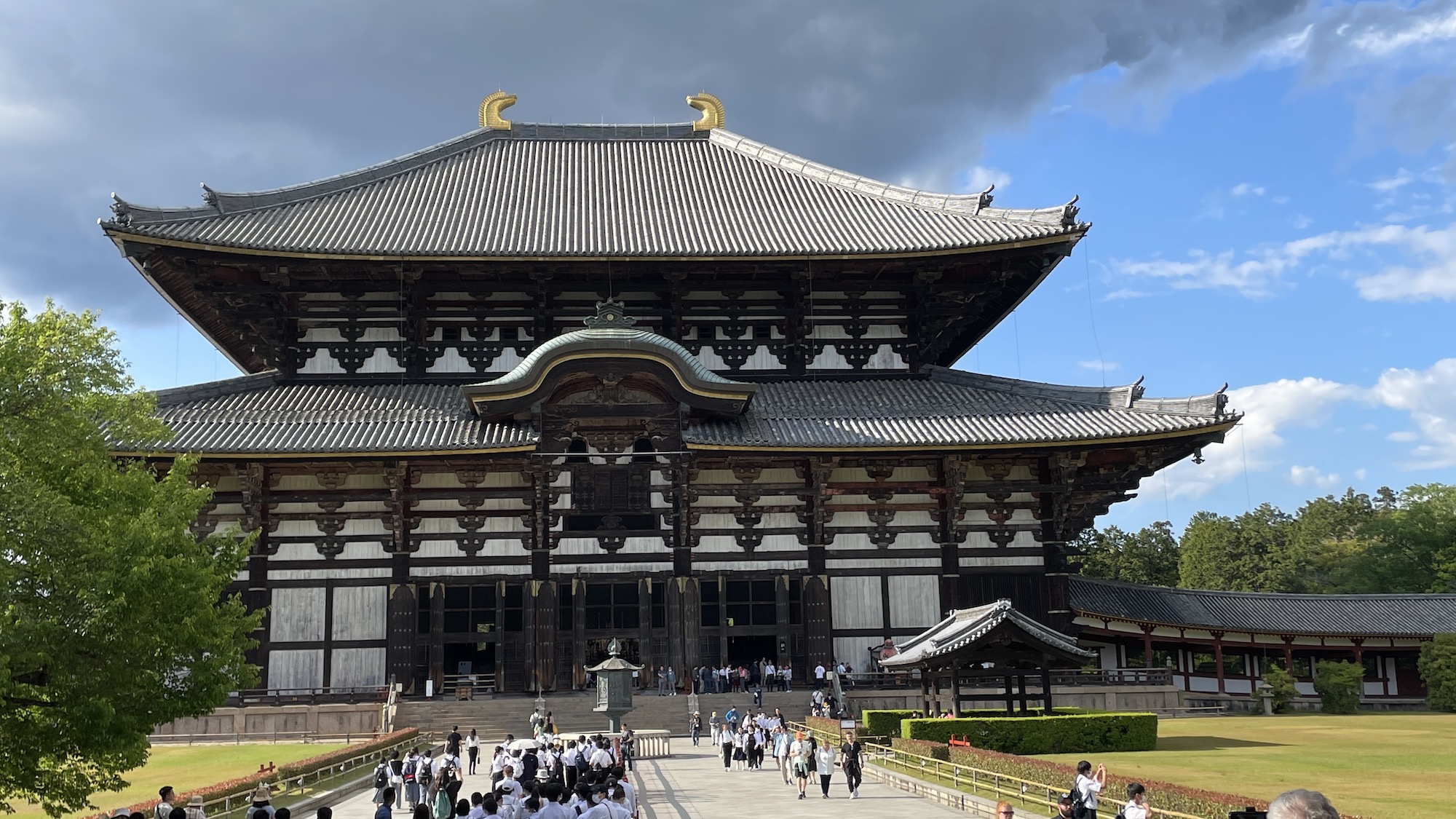
The Todaiji Temple in Nara is the largest wooden structure in the world
There are more beautiful temples and shrines to see but unfortunately a late afternoon shower put a stop to our explorations. If you visit Nara and want to see everything the World Heritage Site has to offer put aside a day for it. In this way you can go through the sites slowly and have plenty of time to be friendly with Nara’s deer too.
Nara is a place that every young Japanese will visit at least once during their school years – it is a popular school trip destination. On our visit we saw many middle and high-school students learning about their country’s remarkable history, enjoying the deer and generally having fun. My guess is that one of the most popular souvenirs they bring home from Nara are the deer antler headbands. Everyone was wearing them! Oh, deer! 🙂
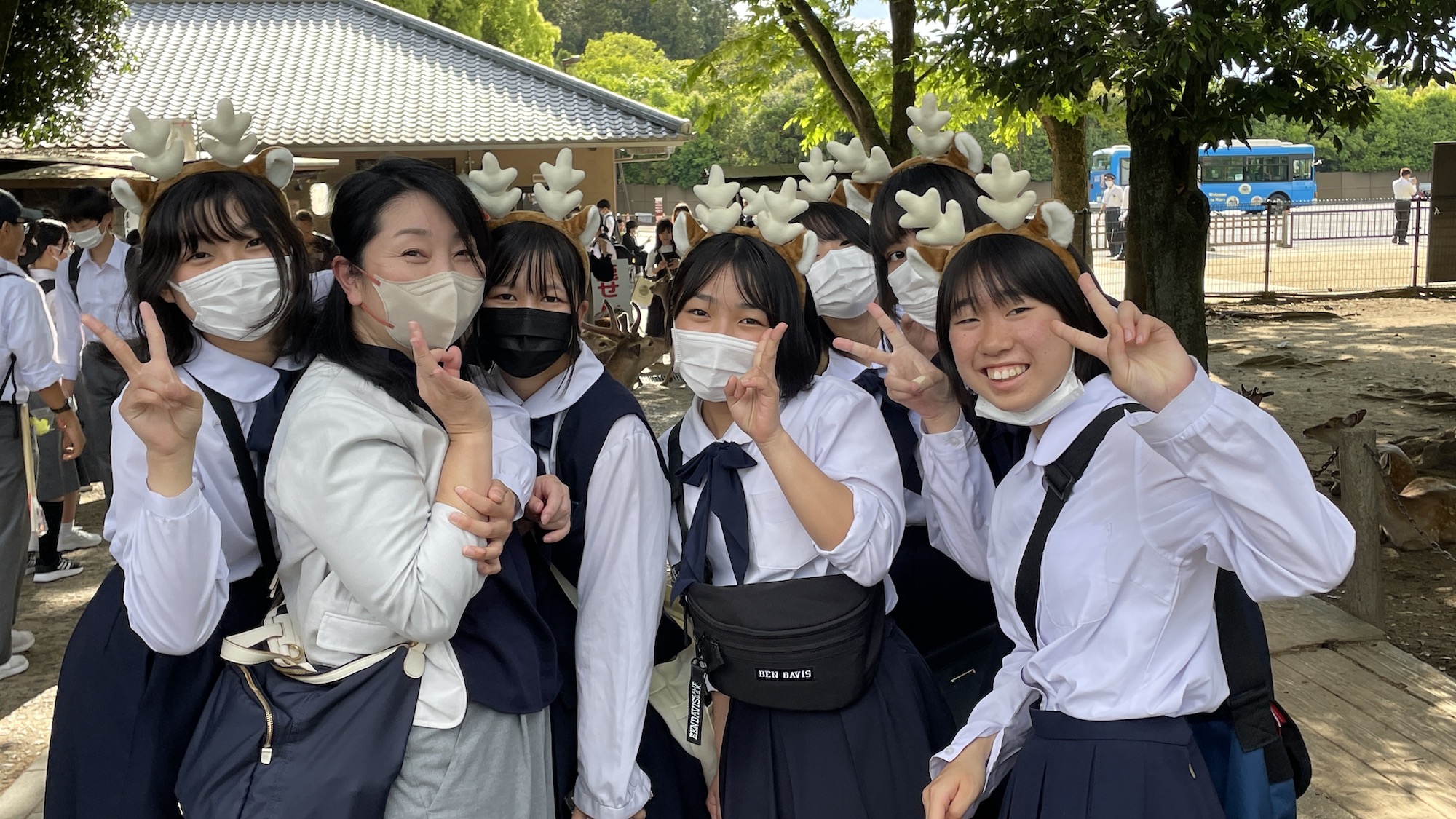
On a school trip to Nara
* The Spirit of Japan Tours organizes private and group tours to temples and sites where you can experience the richness of Japan’s spirituality and traditions. Please, message us for more information about our future tours.

